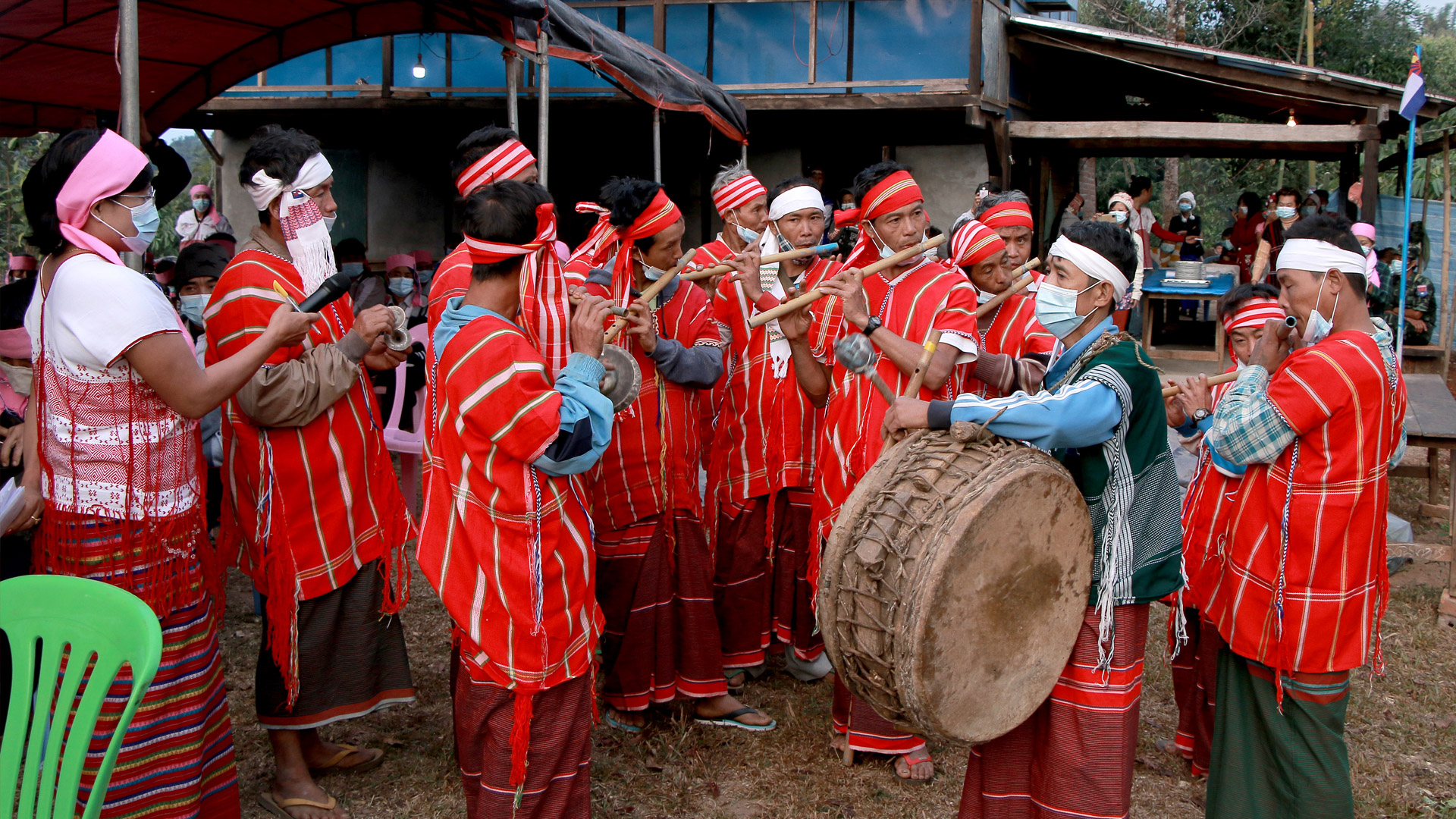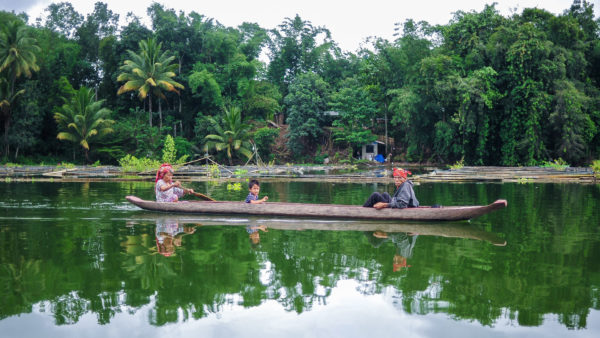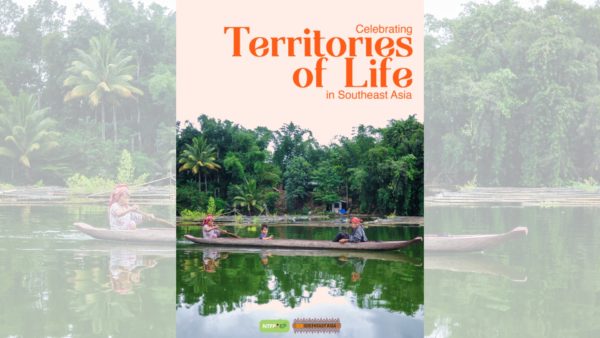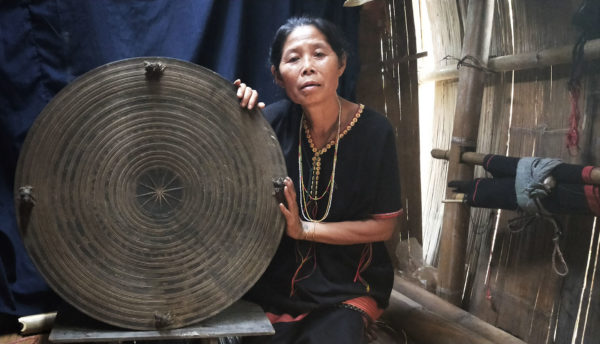Indigenous Peoples in Southeast Asia navigate their place within the legal frameworks of the nation-states. The extent of their self-determination depends on the strength and resilience of their assertions, and the space nation-states provide for such self-determination to be exercised
First published on 07/13/2023, and last updated on 11/09/2023
Written by Timothy Salomon
Honorary member, ICCA Consortium; and Facilitator, National Land Coalition in the Philippines
Note: This article is from the report titled “Celebrating Territories of Life in Southeast Asia.” The text has been edited for the ICCA Consortium website.
Since time immemorial, Indigenous Peoples have occupied their traditional territories exercising self-rule through Indigenous political institutions and customary laws. As the rest of the world modernizes in haste, effectively disconnecting from nature, Indigenous Peoples remain faithful to their intimate relationship with their territories of life, serving as its de facto stewards. Despite complex, multiple, and intersecting threats: armed conflict, displacement, land grabbing, deforestation, land use change, natural resource exploitation, migration, and climate change—no matter what costs, they defend their territories of life.
Southeast Asian nations: International policies on Indigenous Peoples
Several international treaties, conventions, and declarations have been signed, prescribing frameworks and norms for recognizing Indigenous Peoples’ rights. The nation-states of Southeast Asia have varying degrees of adherence to these policies, namely:
1
International Covenant on Civil and Political Rights (ICCPCR) of 1966,
2
International Covenant on Economic, Social and Cultural Rights (ICESCR) of 1976,
3
International Covenant on the Elimination of All Forms of Racial Discrimination (ICERD) of 1965,
4
UN Declaration on the Rights of Indigenous Peoples (UNDRIP) of 2007, and
5
UN Convention on the Conservation of Biological Diversity (UNCBD) of 1993.
Cambodia, Indonesia, the Philippines, and Vietnam firmly adhere to international policies on Indigenous Peoples’ rights. At the same time, Malaysia and Myanmar have expressed their non-adherence to the ICCPR and ICERD, and the ICESCR for Myanmar. Malaysia and Myanmar consider these international policies threats to national sovereignty, citing the incompatibility of international policies with their national legal frameworks.[1] This manifestation must be understood in the context of existing independence movements in both nations emanating from assertions of sovereignty based on ethnic identities, such as among the Karen in Myanmar and the people of West Papua in Indonesia.
National legal frameworks recognizing Indigenous Peoples and their traditional territories
Amidst claims of self-determination asserted by political institutions of Indigenous Peoples, their interaction with the nation-state is embedded in their history. Of central importance is the openness of state policy frameworks to legal pluralism—the extent to which customary law is recognized and the respect accorded to its enforcement in traditional territories.
Table 1 shows the relevant laws and policies on Indigenous Peoples across the countries of focus.
| Cambodia | Land Law of 2001: Establishes the broad legal framework for recognizing land rights through registration, including the recognition of collective ownership of traditional territories of Indigenous Peoples. The law explicitly includes lands that are cultivated and reserves for shifting cultivation. Sub-Decree 83 on Communal Land Titling of 2009: Indigenous Peoples are given legal tenure rights over land by registering collective ownership. |
| Indonesia | 1945 Constitution: Recognizes Masyarakat hukum adat (Adat Peoples/Indigenous Peoples) and traditional peoples towards their traditional rights and cultural identity as long as they are still alive in accordance with community development and the principle of Unitary State of the Republic of Indonesia, which are regulated by law. Basic Agrarian Law of 1960: Recognizes the ulayat land as the collective right of Indigenous Peoples and further regulates the implementing regulations. Amended Forest Law 41 of 1999: Recognizes Indigenous Peoples in their customary forest based on Constitutional Court Ruling No. 35/PUU-X/2012 that has decided the article that states customary forest is state forest was unconstitutional. Later this ruling amended the related article to exclude customary forest from state forest and included it in the private forest hutan hak domain, which has an equal position with private rights (forest management wholly owned by another subject of law). However, this law does not grant land ownership to Indigenous Peoples but refers to the management of the forest-based on traditional belief and customary law. |
| Malaysia | Aboriginal Peoples Act of 1954: Recognizes the customary tenure of the Orang Asli in Peninsular Malaysia. Federal Constitution of 1957: Includes “customs and usage having the force of law,” guaranteeing recognition of customary law. This provides the framework for state governments to formulate laws about Indigenous Peoples and their territorial rights. Native Courts Ordinance of 1992: Institutionalized native courts interpret and enforce customary law in the judicial systems of Sabah and Sarawak. |
| Myanmar | National Land Use Policy of 2016: National framework for land use includes a chapter recognizing the customary tenure of ethnic nationalities as communal land use rights. Protection is guaranteed for agricultural and forest lands where shifting cultivation is practiced. Biodiversity Conservation and Protected Area Law of 2018: Issues a national framework for recognizing Key Biodiversity Areas and establishing protected areas in the country. It has a provision for the recognition of Community Conserved Areas. |
| Philippines | 1987 Constitution: Recognizes the right of Indigenous Peoples to their ancestral land to ensure their economic, social, and cultural well-being. Indigenous Peoples Rights Act of 1997: A landmark legislation that recognizes the rights of Indigenous Peoples to their ancestral domains, self-governance, and cultural integrity. The law recognizes the ownership of Indigenous communities over their traditional territories, including land, bodies of water, and all other natural resources therein. National Integrated Protected Areas System of 1992, as amended in 2018: Recognizes and guarantees respect for the traditional governance of Indigenous Peoples over their ancestral domains as it shares areas with state-declared Protected Areas. |
| Vietnam | The Constitution of 1992: Guarantees all Vietnamese citizens equal rights, including ethnic minorities. |
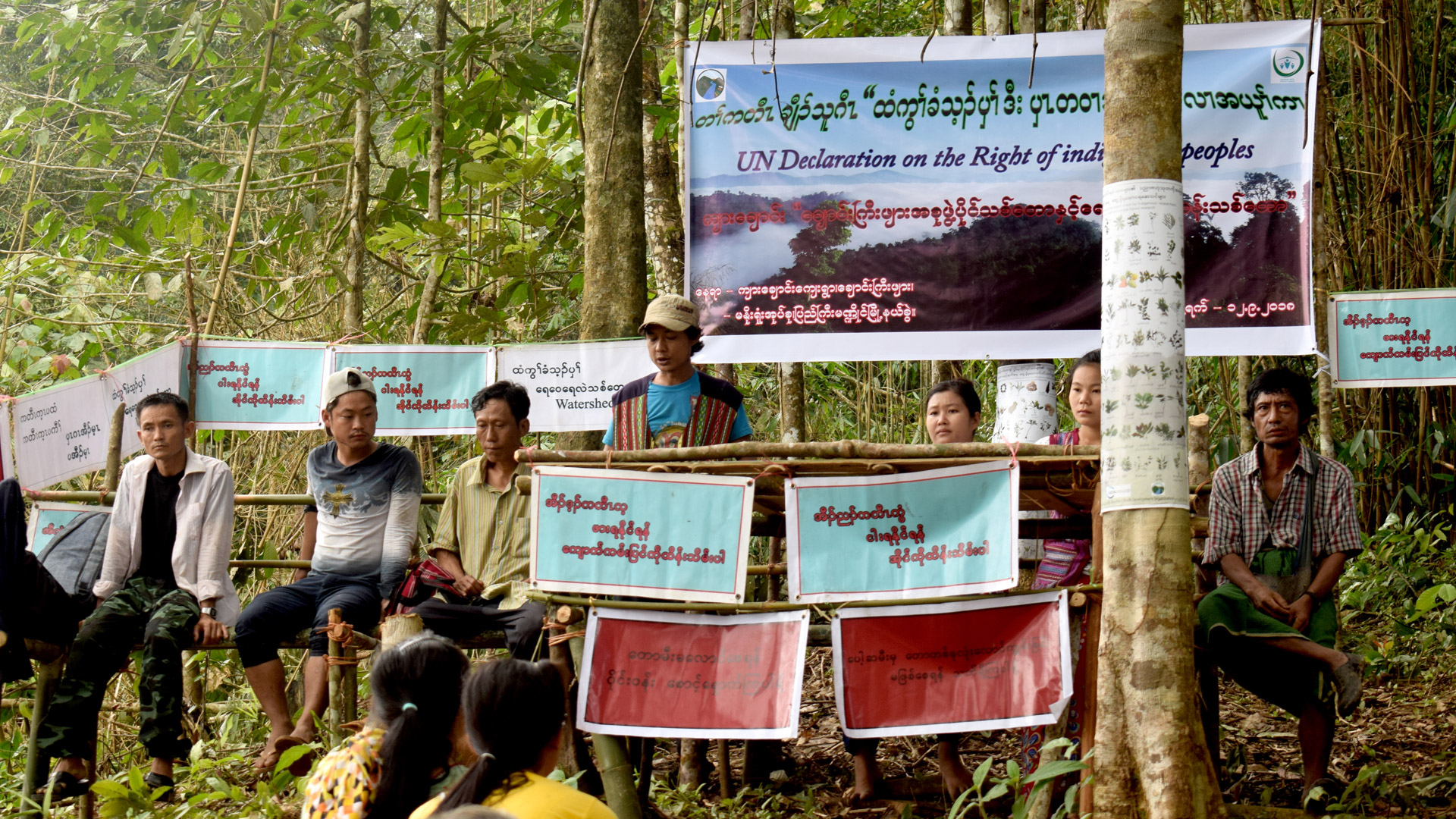
It must be noted that since the military coup in 2021, the Constitution of Myanmar has been abolished. Hence, these laws only have residual applicability subject to new legislation and enforcement regimes issued by the new military government.
The recognition of Indigenous Peoples and their land rights in Cambodia, Indonesia, Malaysia, and the Philippines is enshrined in policy. This recognition contends with the colonial legacies of land administration systems that have historically and, to this date, continued to miscategorize traditional territories as public land.
The Philippines has had significant progress in recognizing land rights by issuing Certificate of Ancestral Domain Titles (CADTs) to nearly a fifth of the country’s territory. In contrast, meager progress has been seen in Cambodia and Indonesia through Community Land Titles (CLTs) and certificates of communal forests, respectively. Indigenous Peoples in Cambodia, Indonesia, and the Philippines are beset with inefficient administrative mechanisms for recognizing traditional territories and fall victim to the misappropriation of traditional territories by non-Indigenous Peoples and private entities.
Despite existing laws, Malaysia cites no progress on recognizing Indigenous Peoples’ land rights but leads the region to institutionalize dispute resolution mechanisms in judicial systems through their Native Courts.
The government of Myanmar, for one, overtly refuses to recognize the existence of Indigenous Peoples. According to the Burma Citizenship Law of 1982, all ethnic groups present in Myanmar’s current geographical area before 1823 or the beginning of the first British annexation are deemed taung-yin-tha or are all “indigenous.” Some ethnic groups in Myanmar do not identify as taung-yin-tha and see themselves as Indigenous Peoples. To this date, the non-recognition of Indigenous Peoples’ distinct identity serves as the basis for the non-recognition of territorial rights and the prevailing assimilation approach in its national policy.
In Vietnam, official policy refers to Indigenous groups as “ethnic minorities,” but in practice, the terms “ethnic minorities” and “Indigenous Peoples” are used interchangeably.[2] Unfortunately, this leads to the non-recognition of traditional territories. Despite this, there are some opportunities for the recognition of their resource rights through implementing a Reducing Emissions from Deforestation and Forest Degradation (REDD+) program, which has served as a pioneer in enabling the participation of ethnic minorities in natural resource governance at multiple levels.
Alternative modes of recognition
Emerging global discussions on climate change and biodiversity conservation have allowed Indigenous Peoples to secure alternative modes of recognition. Their role in conserving forests, biodiversity, and other ecological services such as clean air, clean water, and disaster mitigation is culminated in their assertion of ICCAs–territories of life.
In Indonesia and the Philippines, some sectoral laws in the forestry, maritime, and plantation sectors recognize the rights of Indigenous Peoples in some regulations, for example, “customary forest” and customary rights in coastal and small islands. This has provided an enabling environment for the recognition of ICCAs, where maps are proposed to be integrated into official maps. This will recognize their voluntary efforts to contribute to global and national goals on biodiversity conservation and natural resource governance. This was made possible by including sections on respecting Indigenous Peoples’ traditional governance in national legislation, such as the Amended Forest Law, several regional regulations in Indonesia, and the National Integrated Protected Areas System Act in the Philippines.
Through the continuous work of Indigenous Peoples Organizations such as Aliansi Masyarakat Adat Nusantara (AMAN) and support groups, including the Working Group on ICCAs in Indonesia (WGII), the Indonesian national policies on Indigenous Peoples have, through the years, slowly shown some improvement in the identification of Indigenous territories, recognition, and respect of Indigenous Peoples, their rights, and territories, at least on paper. A critical opportunity for ICCAs in Indonesia is the amendment of the Conservation Bill which is slotted to be discussed in parliament. The Philippines is quite advanced in efforts at recognizing ICCAs’ contribution to biodiversity conservation. The country’s legislative branch is reviewing the Indigenous Communities Conserved Territories and Areas (ICCA) Bill, which will pave the way for creating a national ICCA registry and supporting documentation, recognition, and inclusion of custodians’ rights in local government plans.
Representatives of the Royal Government of Cambodia and civil society organizations embarked on a learning visit to study ICCAs in the Philippines in 2019 to explore its application in their country. Similarly, some government officials in Myanmar have been introduced to ICCA through exchanges with Philippine civil society representatives, although this was before the military takeover. In Vietnam, policy proposals are being formulated to recognize the ICCAs of Vietnamese ethnic minorities as OECMs.
National Biodiversity Strategic Action Plans (NBSAPs) recognize ICCAs and their alternative forms in several biodiversity conservation planning regimes in all the Southeast Asian countries in focus. NBSAPs are an essential tool to advocate for ICCAs because it acts as a compliance document to the Convention on Biological Diversity (CBD) that explicitly prescribes respect for Indigenous Peoples’ rights in biodiversity conservation. Whether or not there is national recognition of ICCAs, communities can self-assert their territories of life and directly submit to the UN Environment Programme’s World Conservation Monitoring Centre’s (UNEP-WCMC) ICCA registry.
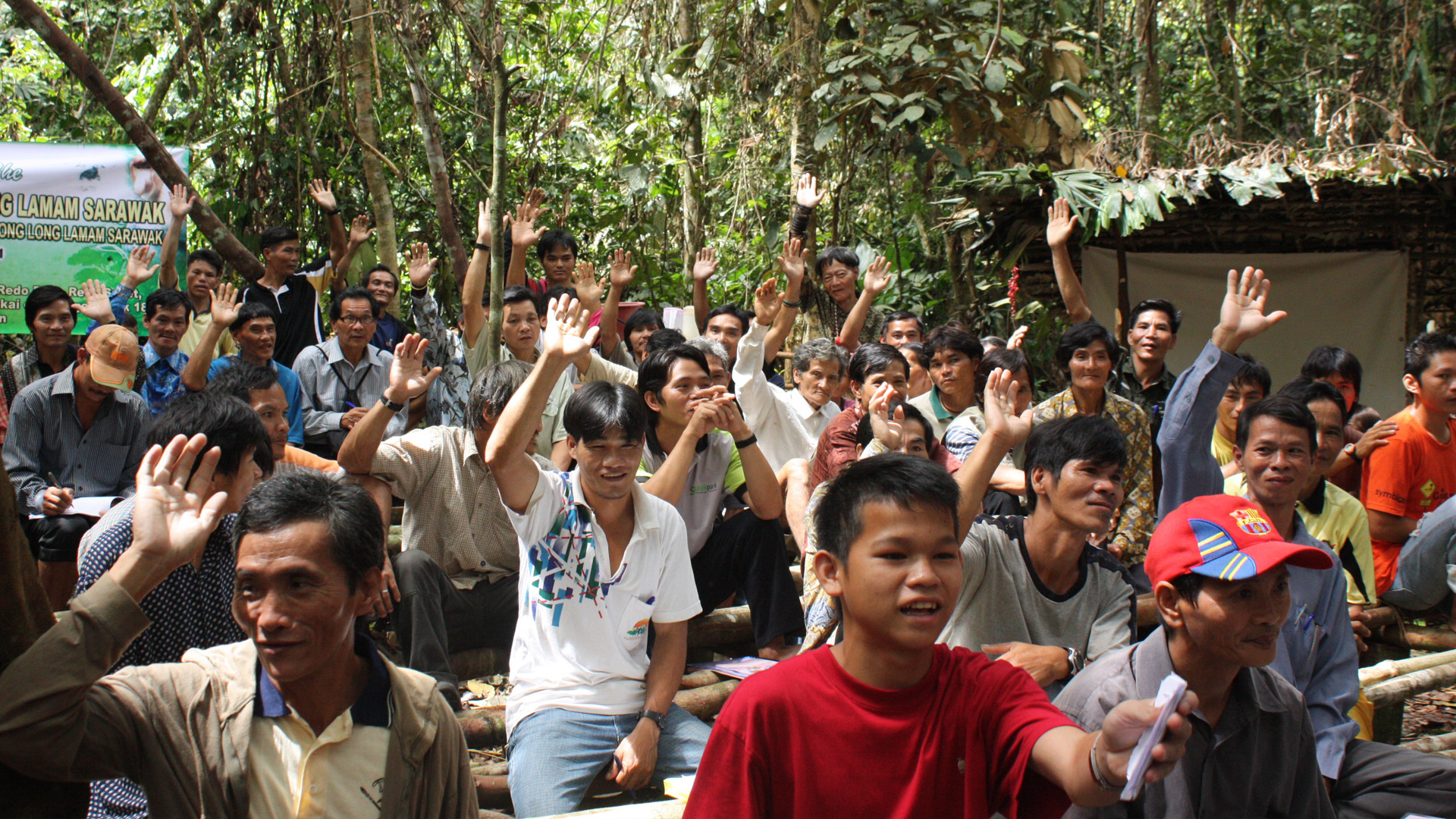
Key challenges in defending territories of life
As Indigenous communities navigate their place within the legal frameworks of the countries they belong to, the extent of their self-determination is dependent on the strength and resilience of their assertions and the space nation-states provide for such self-determination to be exercised. When interests are aligned, nation-states respect Indigenous Peoples’ self-determination over their traditional territories. Still, when governments have an interest in land and/or natural resources, different governments in Southeast Asia are complicit with human rights violations, if not as the perpetrators themselves.
Where administrative mechanisms for the recognition of Indigenous Peoples’ land rights are present such as in Cambodia, Indonesia, and the Philippines, there is a trend that administrative mechanisms for the recognition of Indigenous Peoples’ land rights tend to be inaccessible, under-funded, costly, and time-consuming. As a result, Indigenous Peoples are bogged down with administrative bottlenecks in recognizing their claims. As a result, they unknowingly cede control over their territories as government agencies cover, distribute, and register their lands to the names of other citizens and private entities whose administrative mechanisms are more efficient.
A disturbing trend among governments is that though most Southeast Asian countries have supported the UNDRIP, which contains provisions on respect for Free and Prior Informed Consent (FPIC), only a few have operational, administrative mechanisms toward its recognition. The Philippines has an Administrative Order on FPIC, but it continues to be riddled with multiple allegations of manipulation, particularly in high-priority public-private partnership projects. On the other hand, Cambodia, Indonesia, and Malaysia have provisions for the consultation of Indigenous Peoples in laws and policies. Still, these fall short of being considered genuine FPIC by UNDRIP standards. Vietnam is still in the process of pilot testing FPIC processes established in the REDD+. Myanmar has no mechanism to recognize FPIC processes because they do not recognize Indigenous Peoples.
The faulty conduct of FPIC is motivated by the prevalence of pro-business policies of Southeast Asian governments. Among such is the Sub-Decree on Economic Land Concessions (ELC) in Cambodia, the Omnibus Law of Indonesia, various legislations on Special Economic Zones (SEZ), and the Mining Act in the Philippines.
The Sub-Decree on Economic Land Concessions in Cambodia has been how many Indigenous Peoples’ territories were leased and sold to foreign, mostly Chinese companies to establish commercial enterprises, including plantations. The current slow progress on recognizing Indigenous territories and ICCAs in Indonesia, and the subsequent tenure insecurity, have been exacerbated by the ratification of the Job Creation Law No.11 of 2020. The law, justified as a priority response to the economic recession triggered by the pandemic, weakens environmental assessment and public consultation for approval of new investment in ways that make it easier for land-grabbing by corporations. Customary forests and Indigenous territories risk becoming even more invisible and marginalized in decisions about land use.
In the Philippines, many SEZs have been proclaimed over Indigenous territories. Some have left a legacy of permanently displacing Indigenous Peoples from their traditional territories. In contrast, others continue to threaten displacement depending on the next politician who will continue the pursuit of SEZ establishment. A recent significant development is the passage of Executive Order No. 130 in 2021, which lifted the moratorium on new mining agreements in the country, citing economic recovery from the pandemic as a justification. This is detrimental to Indigenous Peoples in the Philippines because most of the mineral-rich areas in the country are in traditional territories. Some mining permits have been reactivated, and companies have since restored mining operations without consent from Indigenous Peoples.
National human rights institutions such as in Malaysia, the SUHAKAM (Malaysian Human Rights Institutions), and Commission on Human Rights in the Philippines have produced independent reports on companies’ violations of Indigenous Peoples’ rights to FPIC. These reports said that governments were found complicit or actively facilitating companies’ intrusion into traditional territories in the context of land investments, sometimes through state armed elements such as the police and military.
In a June 2021 study, Legal Rights and Natural Resources Center (LRC) concluded that internal displacements, company aggression, and land grabbing typically backed by military mobilizations are feared by Indigenous Peoples in the Philippines. Cases of criminalization are replete in Southeast Asia, where customary access and use of land and natural resources are prevented by state enforcement agents when governments refuse to recognize and respect customary rights and impose their plans, often involving corporate land investments and/or public infrastructure projects.
For the Philippines and Myanmar, cases of criminalization are made more complex by active internal armed conflicts that escalate instances of criminalization into full-blown militarization. As such, Indigenous Peoples have been subjected to severe and systematic violence through outright destruction of their domains that can be found across traditional territories affected by the coup in Myanmar; while in the Philippines, Indigenous leaders accused as members of the revolutionary left-wing New Peoples’ Army (NPA) are massacred, arrested and detained without proper warrants.
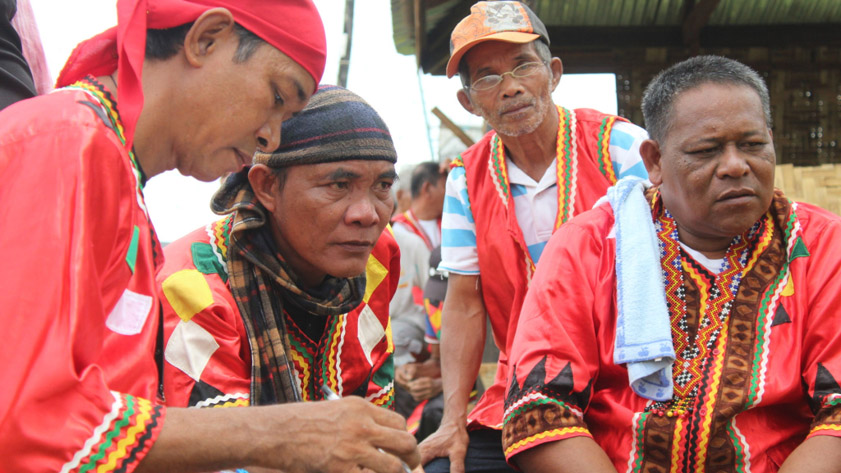
Stories of Indigenous Peoples defending their territories of life
The following cases show some Indigenous Peoples’ struggles in defending their territories, highlighting cooperation, resilience, and regaining management control. The first is about how two Indigenous Peoples, the Kenyah and the Penan, join forces to build a more robust defense against logging in their neighboring territories in Sarawak, Malaysia.
The following case is the Tumandok of Panay Island in the Philippines, whose lands have been taken for a mega-dam project. This exemplifies how the Philippine government uses red tagging to justify the violent suppression of communities defending their lands from unjust takeovers. Red tagging characterizes activists and human rights groups as terrorists as a pre-emptive move for targeted assassinations, arrests without cause, and other human rights abuses.[3]
These struggles are not of the past; unfortunately, these communities are still fighting for their lands and lives in their different contexts. The community whose situation has progressed the most is the Kasepuhan Karang, whose long struggle to regain their sacred responsibility over their land has secured their claims. However, their land overlaps with a park, and their jurisdiction still needs to be clarified to local authorities. Another long-standing struggle to maintain control over managing their land and resources is the Tampuan communities in the Yeak Loam Lake area in Ratanakiri in Cambodia. Many attempts by businesses and their government allies to take control of the lake have been made in the past, and the struggle to maintain the community’s rights to the area continues.
Finally, a Karen woman speaks about the militarization of the Tanintharyi Region in Myanmar and how the takeover has cost them their lives and forests. The coup has threatened their forests’ biodiversity and integrity as it opens up their lands to big projects. Without peace, forests cannot be protected, and the lives of Indigenous Peoples are constantly in peril.
“With the breadth and depth of the threats to Indigenous Peoples, against all odds, their ways of life stand the test of time. This in and of itself is a testament to the inherent wisdom of their ways.”
The situations may be dire, but the resilience of Indigenous Peoples shows a pathway as several crises, such as pandemics, climate change, and biodiversity collapse, confront the human race. With the breadth and depth of the threats to Indigenous Peoples, against all odds, their ways of life stand the test of time. This in and of itself is a testament to the inherent wisdom of their ways. As they defend their territories of life from the worst inclinations of mainstream society, this society stands to benefit from learning from them and may realize their better nature through Indigenous Peoples.
Hkolo Tamutaku K’rer (Salween Peace Park): A Declaration of Hope*
Myanmar
Founded on Indigenous knowledge and generations of stewardship, the Salween Peace Park was established through the collective efforts of 348 Indigenous Karen villages in Mutraw District, Kawthoolei in Burma/Myanmar. With 548,500 hectares of intact forests, the area is host to diverse wildlife including several threatened species, free-flowing rivers, sacred mountains and diverse farmlands of the Karen people. It was formally declared in 2018 to protect Karen culture and the biodiversity of the territory from logging, mining, agribusiness, hydropower dams and other extractive industries. This after more than 70 years of conflict in one of the longest running civil wars.
The Karen has an intimate interconnectedness with nature, believing that the vitality of nature around them directly impacts their prosperity. A central aim of the Peace Park is the formal recognition of kaw common territories, in which traditional management protects community forests, fisheries, forests on slopes and ridges, and wildlife corridors between agricultural lands. Salween is a space for the Karen to practice democracy and self-determination and to develop their vision for an ecologically sound, just, peaceful and sustainable future. The peace however has been short-lived as the military junta that took over Myanmar in early 2021 bombed Karen villages, killing and displacing communities and bringing them back to the violent struggles of the past.
* Abridged from Twa, S.P.S., Fogerite, J. & Palmano, C. (2021). Hkolo Tamutaku K’rer: The Salween Peace Park in Burma/Myanmar. In ICCA Consortium, Territories of life: 2021 report (pp. 111-120). ICCA Consortium. report.territoriesoflife.org
[1]International Work Group for Indigenous Affairs. (2022). The Indigenous world 2022. International Work Group for Indigenous Affairs. https://www.iwgia.org/en/resources/indigenous-world.html
[2] International Work Group for Indigenous Affairs. (2022). The Indigenous world 2022. International Work Group for Indigenous Affairs. https://www.iwgia.org/en/resources/indigenous-world.html
[3] Congress of the United States. (2022). Letter to Secretary of State Antony Blinken and Secretary of Treasury Janet Yellen. https://wild.house.gov/sites/wild.house.gov/files/Multi-Member%20Letter%20re%20Philippines%20Human%20Rights%20Violations%201.24.22.pdf
